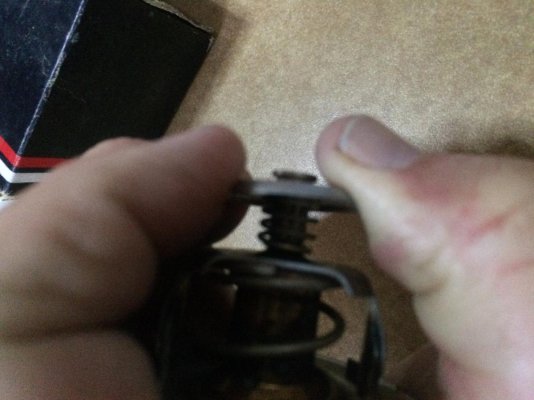High Wire
Guru
Today cruising along at 1650 rpm, after normal running for 4 hours my coolant temperature started creeping up to 225 degrees. Plenty of raw water flow out the exhaust. Exhaust hose temperature 95F. Water exiting was lukewarm. 95 seems about right. Lowering rpm to 1000 barely helped. Coolant pump belt tight.
Opened up and cleaned sw strainer. A little bit of junk in there. Maybe 10 percent at most. Pulled off sw pump cover. Impeller and cam good. All impeller blades intact. Put it back together and again pumping plenty of water.
My best guess is the thermostats. Never seen this type of ts that both opens to pass cooling water and closes off a hx bypass flowpath at the same time. The symptoms are the cooler is hot but the sea water is not picking up much heat. I have 2 new thermostats in hand but have not done this replacement before.
1) ts failure sound right?
2) hard or easy job? I have the Perkins 6.3544 NA with the Multi-Cooler.
Opened up and cleaned sw strainer. A little bit of junk in there. Maybe 10 percent at most. Pulled off sw pump cover. Impeller and cam good. All impeller blades intact. Put it back together and again pumping plenty of water.
My best guess is the thermostats. Never seen this type of ts that both opens to pass cooling water and closes off a hx bypass flowpath at the same time. The symptoms are the cooler is hot but the sea water is not picking up much heat. I have 2 new thermostats in hand but have not done this replacement before.
1) ts failure sound right?
2) hard or easy job? I have the Perkins 6.3544 NA with the Multi-Cooler.
Last edited:


